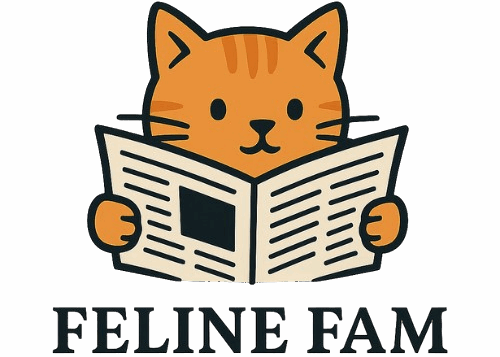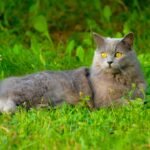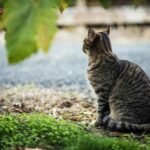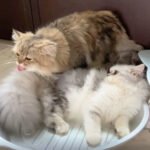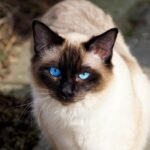Choosing a feline companion should be one of life’s most delightful decisions. Yet many cat lovers unknowingly select breeds that come with devastating health problems built right into their DNA. These aren’t just minor issues that crop up in old age – they’re genetic time bombs that can explode into painful, expensive, and heartbreaking conditions.
While every cat deserves love and care regardless of their breed, veterinarians are becoming increasingly vocal about certain breeds that suffer from predictable health problems. These aren’t random health scares but conditions so common in specific breeds that many vets can spot them before even examining the cat. So let’s get started with the breeds that are keeping veterinary professionals awake at night.
Persian Cats: Behind Those Beautiful Faces

Persian cats with their luxurious coats and snub noses rank among America’s most popular breeds, yet commonly suffer from health conditions due to their limited gene pool. Their flat faces aren’t just adorable – they’re a structural nightmare that makes basic functions like breathing a daily struggle.
Persian cats’ flat faces make breathing extremely difficult, and they are prone to dental disease and runny eyes. The breathing problems stem from severely compressed airways that never developed properly. Imagine trying to breathe through a cocktail straw all day long – that’s essentially what many Persians endure throughout their lives.
Scottish Fold Cats: The Heartbreaking Truth About Those Adorable Ears

The Scottish Fold’s beloved folded ears hide a tragic health defect – their signature fold happens due to a lack of cartilage, and this genetic manipulation has led to a painful degenerative disease called Osteochondrodysplasia, which affects all Scottish Folds. There’s no escaping this condition if you’re a Scottish Fold.
The gene that results in the Scottish fold’s distinctive folded ears also causes degenerative joint disease, resulting in painful, crippling arthritis. All Scottish fold cats are affected by this, there is no cure, and many affected cats must be euthanized at an early age to end their suffering.
Bengal Cats: When Wild Looks Come with Wild Health Risks

Bengal cats are more likely to develop lymphoma than other breeds, and lymphoma is a cancer that affects the lymphatic system – the lymph nodes, ducts, spleen, bone marrow, thymus, and parts of the gastrointestinal tract. This isn’t a minor concern but a potentially fatal disease that strikes this breed disproportionately.
Hypertrophic cardiomyopathy occurs in Bengal cats as an inherited condition where the heart’s left ventricle wall thickens, reducing blood flow, with male cats at higher risk and the condition usually occurring between 5 and 7 years of age. Bengal cats can also develop progressive retinal atrophy, which causes retinal deterioration and eventually leads to blindness with no cure available.
Exotic Shorthair Cats: Persian Problems in a Different Package

Breeders created Exotic Shorthairs as a short-haired version of Persians, and these round-headed, snub-nosed, chubby-cheeked felines look a lot like their long-haired cousins while facing many of the same issues as brachycephalics, including predisposition for PKD, PRA, heart issues, and breathing problems. Think of them as Persians with a crew cut – same problems, different coat length.
Exotic shorthairs are among the most popular purebred cats in America, so their suffering is widespread. The popularity of these cats means thousands are living with compromised breathing, eye problems, and other structural issues that could have been avoided with different breeding choices.
Siamese Cats: Elegant Looks, Serious Health Concerns

Siamese cats are prone to truly nasty health conditions including lymphoma and intestinal cancers, asthma, progressive retinal atrophy, and amyloidosis where a misfolded protein accumulates and damages tissues, plus Niemann-Pick disease. These aren’t minor ailments but serious conditions that can dramatically impact quality of life.
While Siamese cats do not have many physical health problems, they are prone to neurological issues including a type of obsessive compulsive disorder. This behavioral condition can manifest as excessive grooming, repetitive behaviors, or other compulsive activities that distress both cat and owner.
Sphynx Cats: More Than Just Missing Fur

Sphynx cats, bred to be hairless, often suffer from chronic ear and skin problems and the inability to stay warm because the fur that they lack was intended to protect their ears and skin and to help regulate body temperature. Their naked appearance isn’t just unusual – it’s a setup for lifelong health management challenges.
Sphynx cats have no coat to groom and develop skin problems due to excessive skin oils or damage from grooming hairless skin, they have reduced insulation and may suffer from sunburn, along with breeds like the Peterbald. These cats require constant skin care, temperature monitoring, and protection from environmental hazards.
Munchkin Cats: When Short Legs Mean Long-Term Problems

Munchkin cats are the product of a genetic mutation that causes dwarfism called achondroplasia or chondrodysplasia, resulting in shortened and often deformed limbs, with Munchkins especially prone to deformities of the forelimbs, and while all Munchkins have limb deformities to some degree, some experience significant difficulties with mobility.
Problems like lordosis (a curved spine) and kyphosis (a hunchback) are relatively common, with these conditions occurring in some Munchkins, though exact prevalence rates are not well established. Intervertebral disc disease can lead to permanent spinal damage and even paralysis, and this condition is rare in cats, but cats with elongated and malformed spines, like Munchkins, can be at higher risk.
Manx Cats: The Price of a Missing Tail

The Manx cat, known for its taillessness, has a captivating charm, but this unique feature can be a double-edged sword as Manx cats are prone to spinal problems due to their genetics, which can lead to severe discomfort. That adorable stubby tail or complete lack thereof isn’t just cosmetic – it’s connected to serious spinal issues.
The Manx cat breed has a very distinct stub tail feature, and those with shorter tails may have spina bifida and spinal issues due to Manx Syndrome, plus they may also have difficulty eliminating due to a larger than average colon. These aren’t minor inconveniences but potentially life-altering conditions that affect basic bodily functions.
The Bigger Picture: Why This Matters

Purebred cats are just more likely to suffer from genetic health conditions because those animals were born of a limited gene pool and are more prone to painful health issues. Meanwhile, shelters are overcrowded with cats who are in need of a foster or a forever home.
Every purchase of a problematic breed sends a message to breeders that demand exists for cats destined to suffer. If giving a feline companion a loving, safe home is a responsibility that you’re prepared to take on, visit a reputable shelter to adopt and never buy a “purebred” cat or any other animal. The most loving thing we can do is choose cats based on their need for homes, not their ability to fit a particular aesthetic.
The next time you see those impossibly cute flat faces, folded ears, or tiny legs, remember the price these cats pay for our preferences. True cat lovers put feline welfare above human desires for unusual appearances. What do you think about it? Tell us in the comments.
